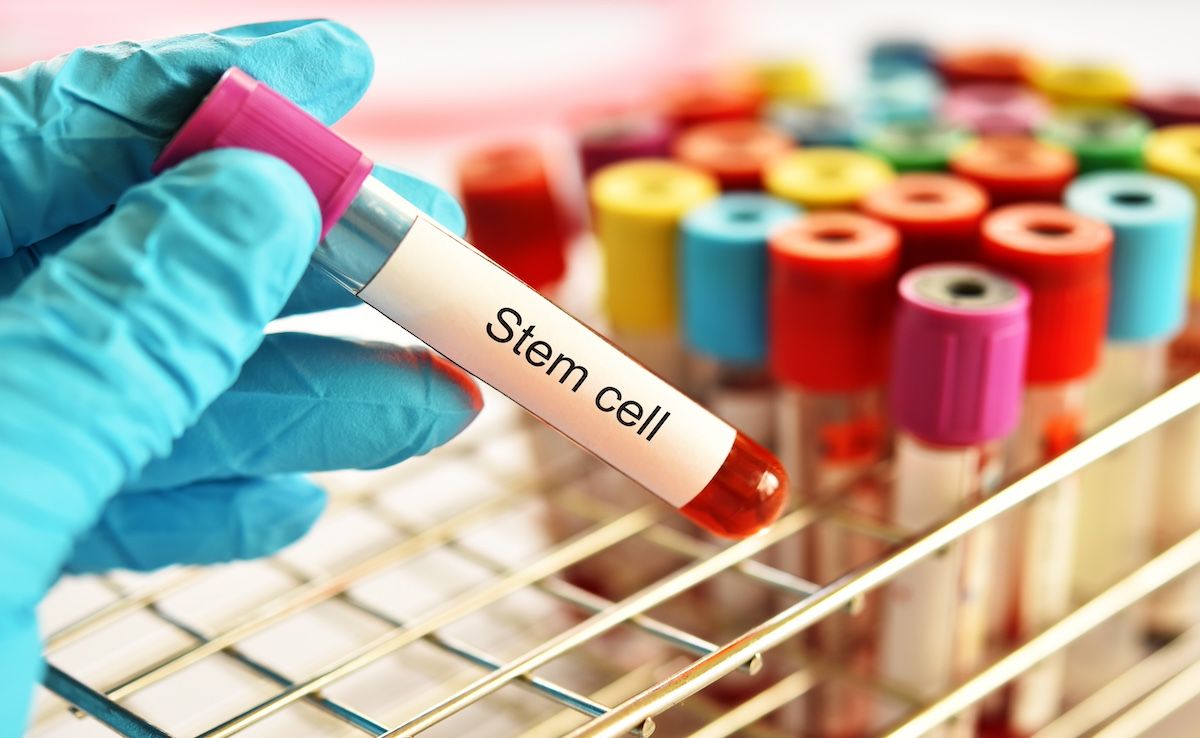- Center on Health Equity & Access
- Clinical
- Health Care Cost
- Health Care Delivery
- Insurance
- Policy
- Technology
- Value-Based Care
Study Explores Radiation-Free Transplant Approach for Patients With Dyskeratosis Congenita
A new study finds that eliminating radiation from conditioning regimens in patients with dyskeratosis congenita undergoing allogeneic hematopoietic cell transplantation did not negatively affect survival or increase complications.
A recent study from researchers at the University of Minnesota investigates a reduced-intensity conditioning (RIC) regimen for allogeneic hematopoietic cell transplantation (alloHCT) in patients with dyskeratosis congenita/telomere biology disorders (DC/TBD). The study, published in Transplantation and Cellular Therapy, examines outcomes of alloHCT for DC/TBD-associated bone marrow failure (BMF) or myelodysplastic syndrome (MDS) using a RIC regimen without total body irradiation (TBI).1 The authors compared their results against those of a previous trial that included low-dose TBI.
Dyskeratosis congenita and telomere biology disorders are rare, inherited conditions that affect the body's ability to maintain the integrity of telomeres, leading to premature cellular aging. | Image Credit: © jarun011 -stock.adobe.com

The goal of the study, a single-center, single-arm, open-label trial, was to evaluate whether removing radiation from the conditioning process would affect outcomes such as graft failure, graft-vs-host disease (GVHD), and overall survival in patients who typically have heightened sensitivity to treatment-related toxicity.
"Elimination of TBI from the RIC regimen for DC/TBD was not associated with significant changes in rates of graft failure, GVHD, and overall survival but was associated with delayed achievement of full donor chimerism and improved lymphocyte reconstitution," the researchers reported.
The non-TBI cohort included 10 patients with a median follow-up of 3.9 years, while the TBI cohort comprised 12 patients with a median follow-up of 10.5 years. Patients in the non-TBI cohort received reduced-intensity conditioning (RIC) without radiation, whereas the TBI cohort underwent RIC with 200 cGy of TBI.
The study results showed that both groups demonstrated low GVHD rates and similar overall survival (OS) at 4 years. The overall survival rate was 80% in the non-TBI cohort and 75% in the TBI cohort (P = .78). The incidence of acute GVHD by day 100 was 0% in the non-TBI group compared with 8% in the TBI group (P = .36). Chronic GVHD at 4 years was also similar, with 10% of patients in the non-TBI cohort and 17% in the TBI cohort affected (P = .72).
Notably, the study found that patients in the non-TBI group experienced superior lymphocyte recovery at 1 year post transplant compared with those who received TBI. However, they also showed delayed achievement of full donor chimerism, a critical factor in transplant success.
The researchers emphasized the importance of these findings, stating, "For DC/TBD-associated bone marrow failure, TBI appears to be dispensable." This discovery could lead to significant improvements in transplant protocols for DC/TBD patients, potentially reducing the risk of long-term complications associated with radiation exposure.
For patients with MDS, however, the outcomes were less favorable. All 3 patients with MDS in the non-TBI group experienced relapse, with 2 successfully treated with a second transplant. In contrast, the 1 patient with MDS in the TBI group achieved full donor myeloid engraftment without relapse but later died from complications related to immune-mediated cytopenia. The researchers highlighted that "optimal approaches to DC/TBD-associated MDS remain unclear."
DC/TBDs are rare, inherited conditions that affect the body's ability to maintain the integrity of telomeres, leading to premature cellular aging. These conditions often manifest in BMF and, less commonly, MDS, both of which may require a life-saving alloHCT. However, patients with DC/TBD are particularly sensitive to DNA and cellular damage caused by radiation and alkylating agents commonly used in conditioning regimens.2 By eliminating TBI from the conditioning regimen, researchers aim to minimize both acute toxicities and long-term adverse effects.
Overall, the study suggests that for patients with DC or TBD undergoing alloHCT for BMF, radiation may not be necessary to achieve successful outcomes.1 While the results are promising, the researchers acknowledge that larger cohorts and longer follow-up periods are needed to fully assess the impact of eliminating TBI and to evaluate long-term complications in this patient population.
References
- Dimitrov M, Merkle S, Cao Q, et al. Allogeneic hematopoietic cell transplant for bone marrow failure or myelodysplastic syndrome in dyskeratosis congenita/telomere biology disorders: single-center, single-arm, open-label trial of reduced-intensity conditioning without radiation. Transplant Cell Ther. 2024;30(10):1005.e1-1005.e17. doi:10.1016/j.jtct.2024.07.007
- Barbaro P, Vedi A. Survival after hematopoietic stem cell transplant in patients with dyskeratosis congenita: systematic review of the literature. Biol Blood Marrow Transplant. 2016;22(7):1152-1158. doi:10.1016/j.bbmt.2016.03.001
Real-World Data Support Luspatercept vs ESAs for Anemia in Lower-Risk MDS
June 5th 2025Patients with myelodysplastic syndrome (MDS) who received luspatercept showed greater hemoglobin gains and transfusion independence compared with erythropoiesis-stimulating agents (ESAs) in a real-world analysis.
Read More
